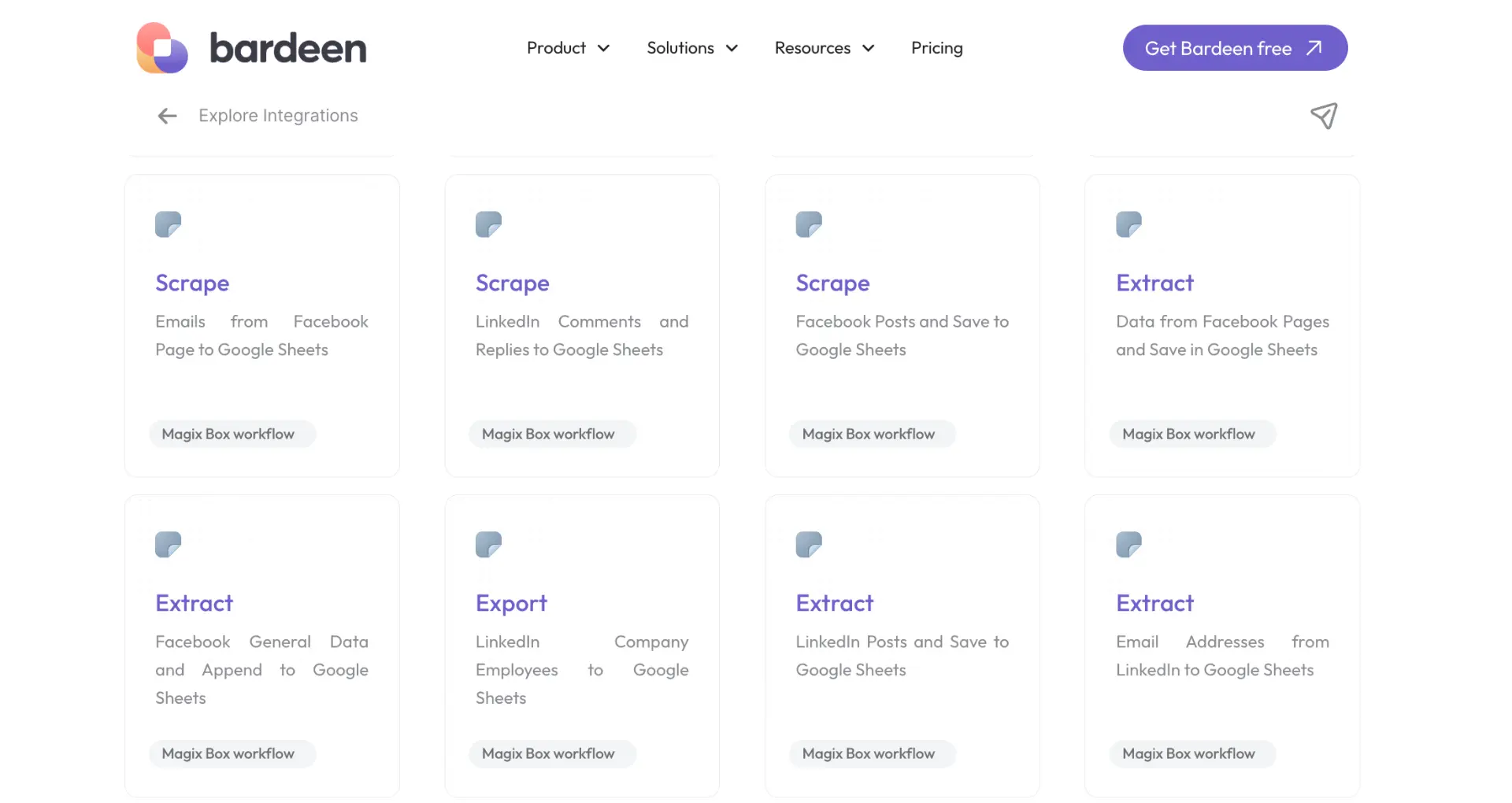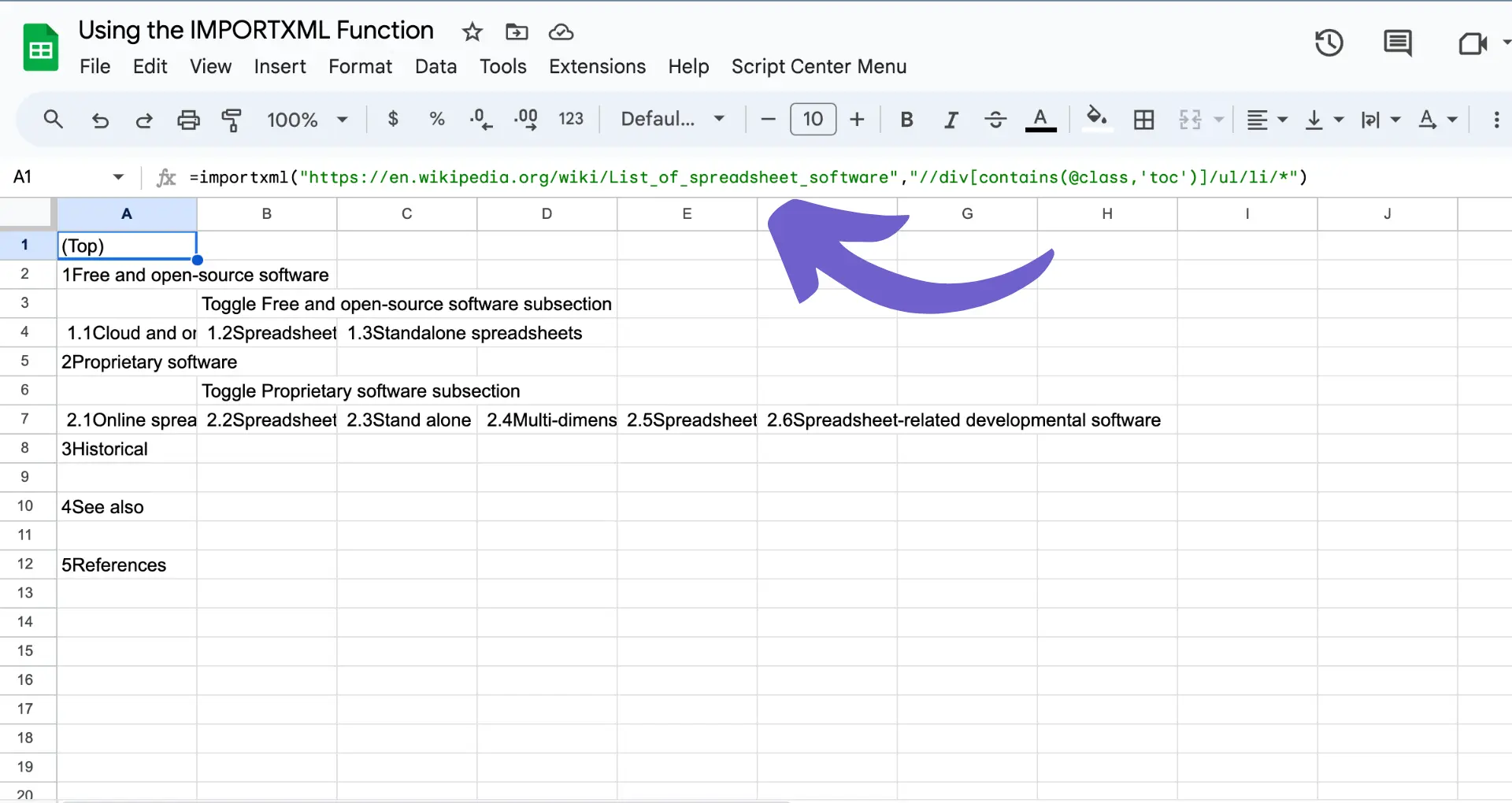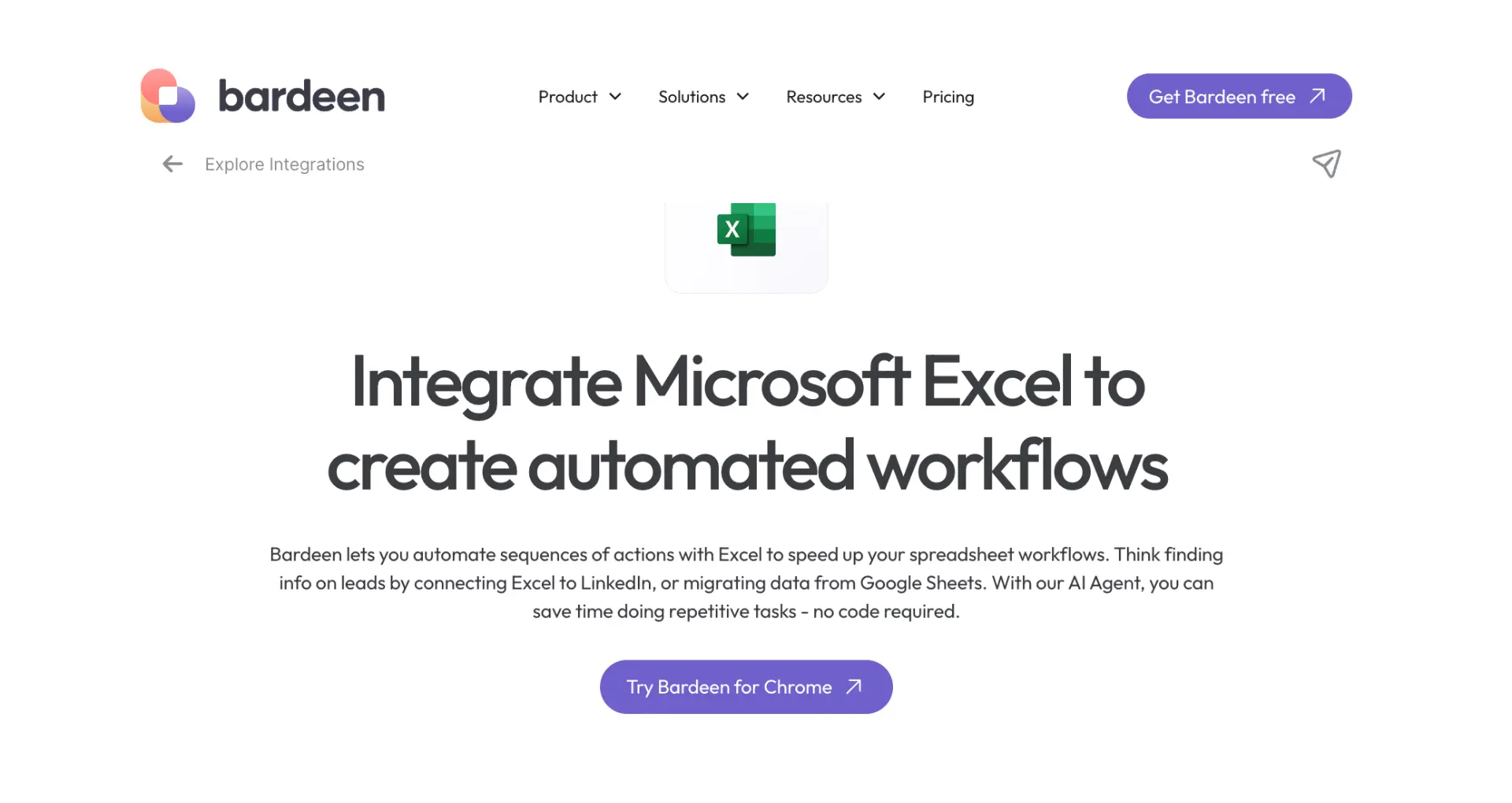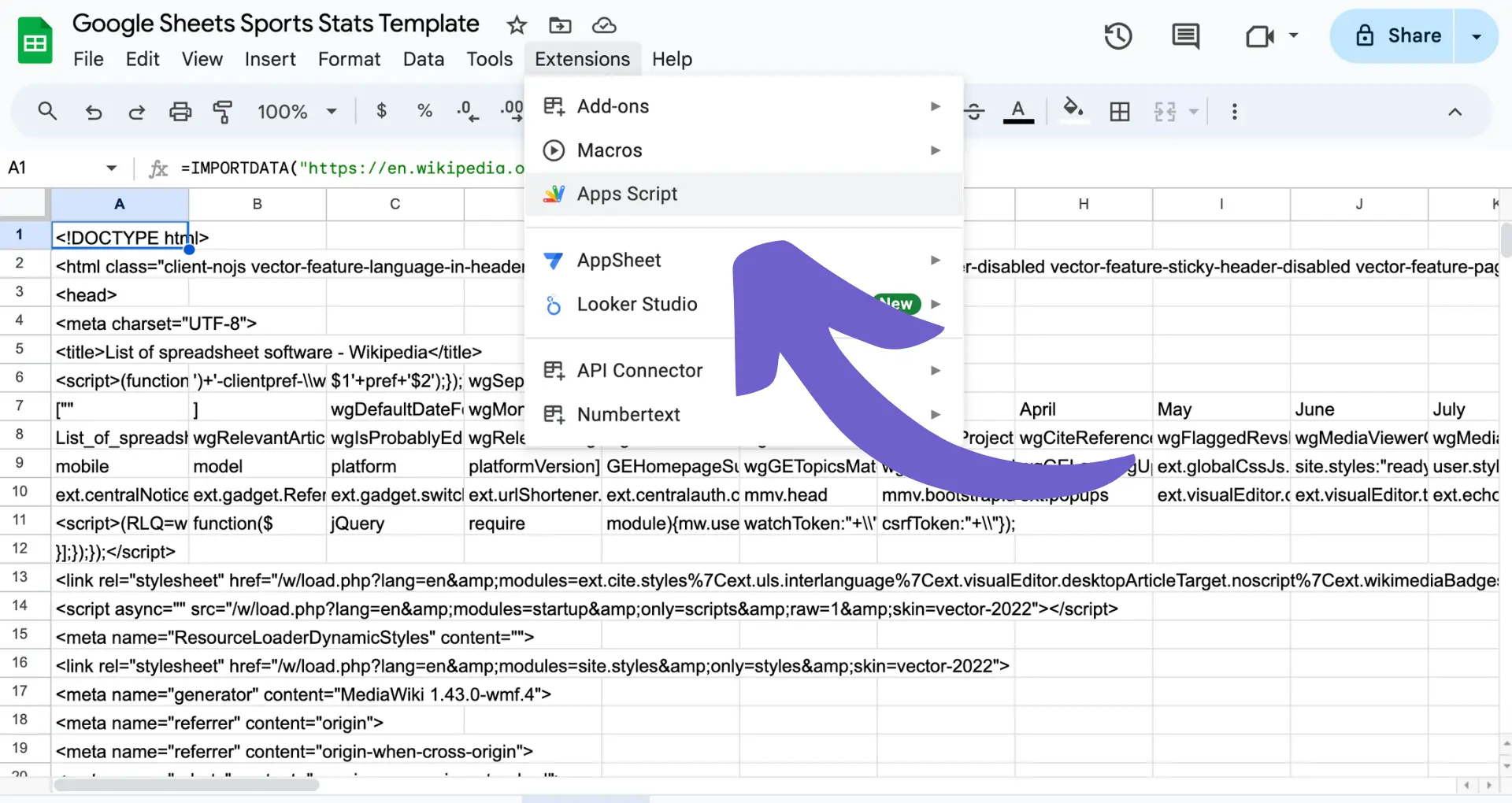Use IMPORTXML function to convert XML to Google Sheets.
By the way, we're Bardeen, we build a free AI Agent for doing repetitive tasks.
If you often work with XML data, try Bardeen's automation tools. It automates importing XML, saving you time and effort.
Converting XML data to Google Sheets allows you to efficiently manage and analyze structured data. This guide walks you through 5 simple steps to quickly import XML into Google Sheets. You'll learn how to set up your spreadsheet, use built-in functions like IMPORTXML, and even automate the process with Google Apps Script.
Introduction
XML (Extensible Markup Language) is a versatile format for storing and sharing structured data across different systems. Its hierarchical structure and customizable tags make it ideal for representing complex data relationships. Converting XML to Google Sheets allows you to leverage the power of spreadsheets for data analysis, visualization, and collaboration.
In this guide, we'll walk you through 5 simple steps to quickly import XML data into Google Sheets:
- Understanding XML and its importance in data transfer
- Setting up Google Sheets for XML import
- Importing XML data using built-in Google Sheets functions
- Automating XML to Google Sheets conversion
- Troubleshooting common issues
By the end of this guide, you'll be able to effortlessly convert XML to Google Sheets and harness the power of structured data in your spreadsheets.
Understanding XML and Its Importance in Data Transfer
XML (Extensible Markup Language) is a markup language that defines a set of rules for encoding documents in a format that is both human-readable and machine-readable. It plays a crucial role in data structuring and exchange across different systems.
The key advantages of XML in maintaining data integrity and facilitating complex data communications include:
- Platform-independent: XML can be used on any operating system and with any programming language, making it ideal for exchanging data between devices running on different platforms.
- Human-readable and self-descriptive: The tags used in XML make it easy for humans to understand the structure of the data being transferred, which is particularly useful for debugging and troubleshooting.
- Structured data: XML allows you to define a hierarchical structure for your data using tags, making it easier to organize and represent complex data sets.
- Interoperability: XML promotes seamless data exchange between different systems that support the format.
- Extensibility: You can define your own tags and structures to represent any type of data, allowing XML to adapt to changing requirements without breaking compatibility.
- Validation: XML documents can be validated against a schema to ensure that the data adheres to a specific format, helping maintain data integrity during transfer.
Automate your workflows with ease. Learn how to scrape data from websites using Bardeen’s no-code solutions to stay competitive and efficient.

These features make XML a widely adopted standard for data exchange across various industries and technologies, providing a robust and versatile solution for transferring structured data between devices and systems.
Setting Up Google Sheets for XML Import
To begin importing XML data into Google Sheets, start by opening a new spreadsheet in your Google Sheets account. Once you have a blank spreadsheet ready, follow these steps:
- Ensure that your spreadsheet is set to the correct locale for your data. You can change the locale by going to File > Spreadsheet settings > Locale.
- If you plan to use the IMPORTXML function to import data from a specific URL, make sure that the URL is accessible and contains valid XML data.
- Determine the XPath query you will use to extract the desired data from the XML file. XPath is a query language used to navigate and select nodes in an XML document. You can use online tools or browser extensions to help you build and test your XPath queries.
- Optionally, you may want to set up a specific sheet within your spreadsheet to hold the imported XML data. This can help keep your data organized and make it easier to work with.
With these steps completed, your Google Sheets environment is now set up and ready to import XML data using the built-in IMPORTXML function or other methods. For further automation, consider using tools to enrich your data from various sources.
Importing XML Data Using Built-In Google Sheets Functions
To import XML data into Google Sheets, you can use the built-in IMPORTXML function. Follow these steps to use IMPORTXML effectively:
- Identify the URL of the webpage containing the XML data you want to import.
- Determine the XPath query to extract the specific data you need. XPath is a query language used to navigate and select nodes in an XML document. You can use online tools or browser extensions to help build and test your XPath queries.
- In your Google Sheets spreadsheet, enter the IMPORTXML function in a cell using the following syntax: =IMPORTXML("url", "xpath_query"). Replace "url" with the URL of the webpage enclosed in quotation marks, and "xpath_query" with the XPath query you developed.
- Press Enter to execute the function, and the data will be imported into your spreadsheet.

Here are some practical examples of XPath syntax:
- //h2: Selects all elements on the page.
- //table[1]: Selects the first element on the page.
- //a/@href: Selects the "href" attribute values from all (link) elements on the page.
For easier data handling, automatically connect Google Sheets to Microsoft Excel using Bardeen. This saves time and reduces manual updates.

Keep in mind that IMPORTXML may not work with all websites, as some sites block web scraping or require authentication. Additionally, the imported data will not automatically refresh; you'll need to manually re-enter the function or use Google Apps Script to automate updates.
Automating XML to Google Sheets Conversion
When dealing with large or frequently updated XML files, automating the import process using Google Apps Script can save time and reduce errors. Here's an introduction to using Google Apps Script for this purpose:

- Open your Google Sheets spreadsheet and navigate to Tools > Script editor to create a new script.
- In the script editor, define a function that fetches the XML data from the desired URL or file location. Use the UrlFetchApp.fetch() method for web-based XML files or the DriveApp.getFileById() method for XML files stored in Google Drive.
- Parse the fetched XML data using the XmlService.parse() method, which converts the XML string into a structured XML document object.
- Extract the desired data from the XML document using methods like getChildren(), getAttribute(), and getText(). Use XPath-like expressions to navigate the XML hierarchy and select specific elements or attributes.
- Write the extracted data to your Google Sheets spreadsheet using the SpreadsheetApp.getActiveSheet() and getRange() methods, followed by the setValues() method to populate the cells with the extracted data.
Here's a basic script example that automates the fetching and parsing of XML data:
function importXML() {
var url = "https://example.com/data.xml";
var response = UrlFetchApp.fetch(url);
var xml = response.getContentText();
var document = XmlService.parse(xml);
var root = document.getRootElement();
var data = [];
var elements = root.getChildren("element");
for (var i = 0; i < elements.length; i++) {
var item = elements[i];
var name = item.getChild("name").getText();
var value = item.getChild("value").getText();
data.push([name, value]);
}
var sheet = SpreadsheetApp.getActiveSheet();
sheet.getRange(1, 1, data.length, data[0].length).setValues(data);
}
This script fetches XML data from a URL, parses it, extracts "name" and "value" elements, and writes the data to the active sheet starting from cell A1. Modify the URL, XML navigation, and data extraction parts to suit your specific XML structure and requirements.
Automate Google Sheets with Bardeen Playbooks
Converting XML to Google Sheets can streamline data analysis and reporting, especially when dealing with large datasets or requiring regular updates. While manual methods exist, automating this task with Bardeen not only saves valuable time but also reduces the risk of human error. Imagine automating the extraction and transformation of XML data into a structured format in Google Sheets without writing a single line of code. Bardeen's playbooks make this possible, enabling seamless integration that enhances productivity and data accuracy. Start automating by downloading Bardeen from Bardeen.ai/download.
- Save data from the Google News page to Google Sheets: Automate the process of extracting current news data and saving it directly into Google Sheets for easy tracking and analysis.
- Copy a newly created Asana task to Google Sheets: Ensure your project tasks and their details are automatically updated in a Google Sheets spreadsheet for streamlined project management.
- Copy all Github issues to Google Sheets: Automatically transfer issues from GitHub into Google Sheets, making bug tracking and feature requests easier to manage and analyze.






.svg)
.svg)
.svg)
